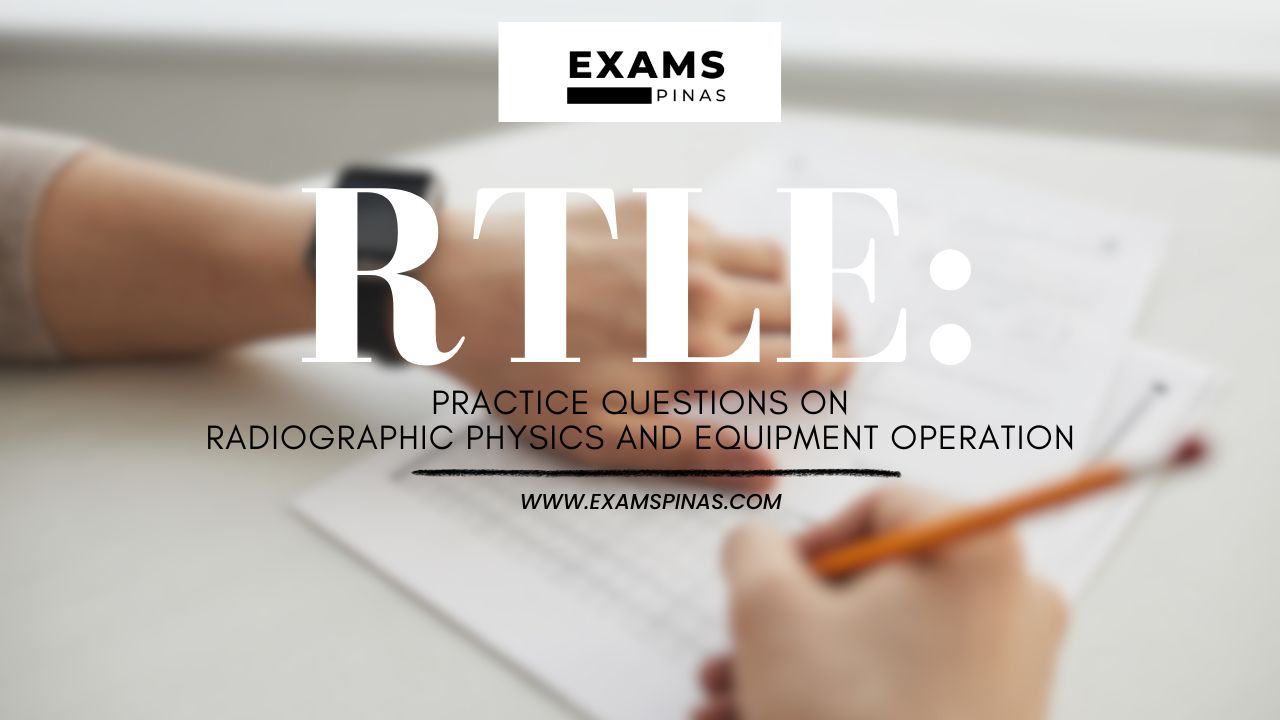Here are some practice questions on Radiographic Physics and Equipment Operation for the Radiologic Technologist Licensure Board Exam:
- Question 1: When X-rays pass through matter, which interaction is responsible for the majority of the image formation on the radiographic film?
A) Compton scattering B) Photoelectric absorption C) Coherent scattering D) Pair production
Answer: B) Photoelectric absorption
Explanation: Photoelectric absorption is the primary interaction between X-rays and matter for image formation in diagnostic radiography. It occurs when an incident X-ray photon ejects an inner-shell electron from an atom, resulting in the formation of a characteristic X-ray photon and the ionization of the atom.
- Question 2: In radiographic imaging, what is the purpose of using a collimator?
A) To reduce patient dose B) To restrict the X-ray beam to the area of interest C) To enhance image contrast D) To filter out low-energy X-rays
Answer: B) To restrict the X-ray beam to the area of interest
Explanation: A collimator is a device used to limit the size and shape of the X-ray beam. It ensures that only the area of interest is exposed to radiation, reducing unnecessary radiation exposure to surrounding tissues and improving image quality.
- Question 3: A radiologic technologist is performing an X-ray examination of a pediatric patient. What is the primary consideration regarding technical factors for this imaging procedure?
A) Use higher kVp settings for better penetration
B) Use lower mAs settings to minimize patient dose
C) Use shorter exposure times to reduce motion blur
D) Use appropriate exposure techniques for the patient’s size and condition
Answer: D) Use appropriate exposure techniques for the patient’s size and condition
Explanation: When imaging pediatric patients, it is crucial to adjust the technical factors (kVp, mAs, exposure time) based on their size, condition, and the specific area being imaged. This helps to minimize radiation dose while obtaining diagnostic-quality images.
- Question 4: When using a digital radiography system, what is the purpose of an anti-aliasing filter?
A) To reduce noise in the image
B) To enhance spatial resolution
C) To remove high-frequency noise
D) To improve contrast in the image
Answer: B) To enhance spatial resolution
Explanation: An anti-aliasing filter in digital radiography helps to prevent aliasing artifacts, which can occur when high-frequency information in the image exceeds the Nyquist frequency. It improves spatial resolution by filtering out high-frequency noise.
- Question 5: A radiologic technologist is performing a mobile X-ray examination on a patient in a critical care unit. What is a key consideration for minimizing radiation exposure to the patient and healthcare personnel?
A) Use a high-speed screen-film combination
B) Position the X-ray tube as close to the patient as possible
C) Implement appropriate shielding and use lead aprons
D) Increase the X-ray beam collimation
Answer: C) Implement appropriate shielding and use lead aprons
Explanation: In mobile X-ray examinations, implementing appropriate shielding measures and ensuring the use of lead aprons for both the patient and healthcare personnel are essential for minimizing radiation exposure.
- Question 6: When adjusting the milliampere-seconds (mAs) setting on an X-ray machine, what effect does increasing the mAs have on the resulting image?
A) Increases image contrast
B) Decreases image density
C) Increases image noise
D) Increases image density and reduces quantum mottle
Answer: D) Increases image density and reduces quantum mottle
Explanation: Increasing the mAs setting results in a higher quantity of X-ray photons reaching the image receptor, which increases image density. It also helps to reduce quantum mottle (noise) by providing a more consistent exposure.
These questions are for practice purposes and may not reflect the exact content of the Radiologic Technologist Licensure Board Exam.

